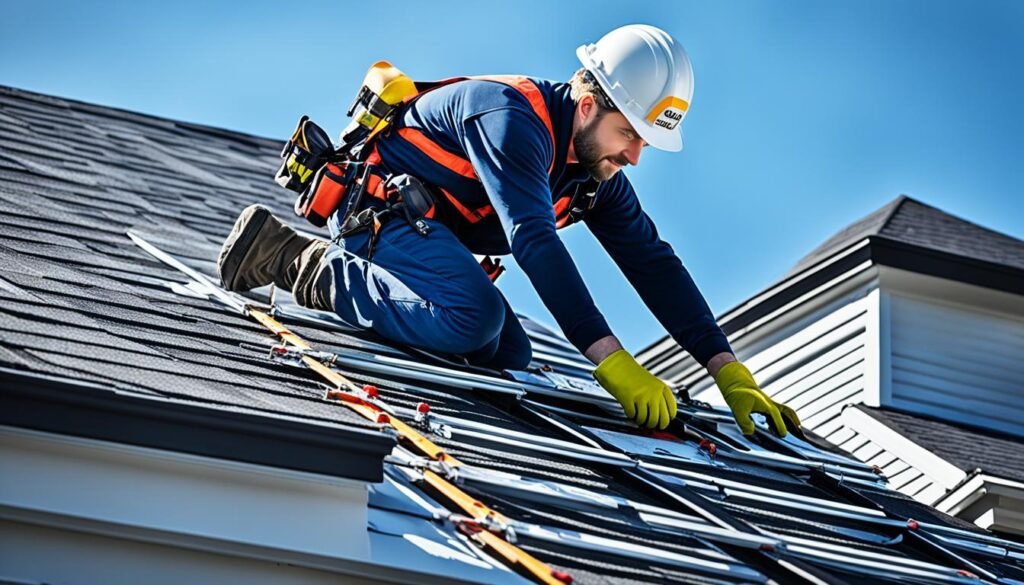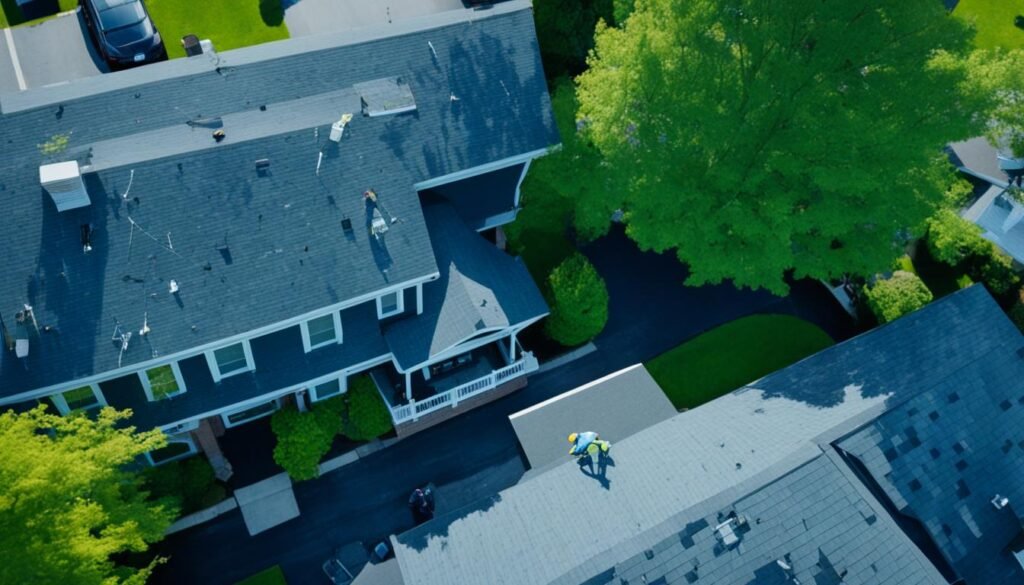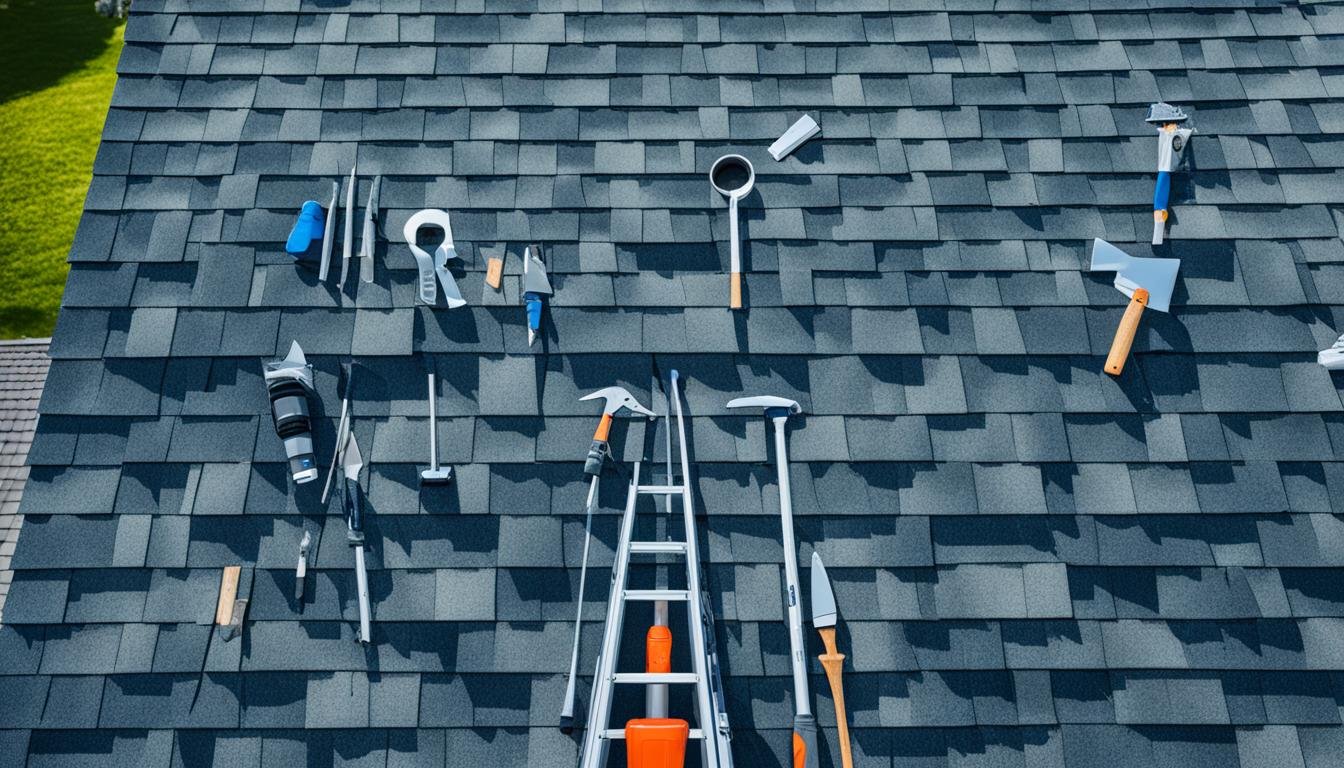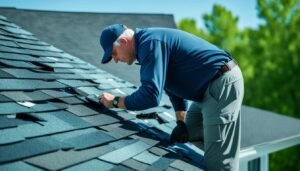It’s a question that may linger in the mind of any homeowner, especially after seasons of harsh weather: Is my roof still in peak condition? The truth is, the safety and longevity of your home hinge on the integrity of your roof, a part that is too often overlooked until it’s too late. With a practical DIY roof inspection, you can uncover the subtler signs of wear and tear that could spell trouble down the line. Learn how to inspect your roof with a comprehensive DIY roof inspection checklist, become versed in roof maintenance tips, and be the first to recognize the signs of roof damage. No need to be a professional—this do-it-yourself roof inspection guide empowers you to take charge of your home’s well-being.
Whether it’s curled shingles or mysterious water stains, the clues are there if you know where to look. By performing regular inspections, you can catch problems early and mitigate costly repairs, ensuring your home remains secure and sturdy through every season. Grasp the essentials of a DIY roof inspection and take the first proactive step towards smarter home maintenance.
Key Takeaways
- Understanding the essentials of a DIY roof inspection can save you from hefty future repair costs.
- Identifying common signs of roof damage is key to pre-emptive maintenance.
- Seasonal inspections post extreme weather are crucial for early detection of roof wear and tear.
- Even without professional tools, you can conduct a preliminary inspection safely from the ground.
- For more detailed inspections, knowledge of ladder safety and the use of binoculars are invaluable.
- Consulting with professionals is advised for complex roofing issues, especially those covered by insurance policies.
- Regular roof maintenance increases property value and overall safety.
The Importance of Regular DIY Roof Evaluations
Like a vigilant guardian, your home’s roof shelters you from the elements, but it also requires regular check-ups to ensure it continues to perform at its best. This is where DIY roof inspection checklists and roof care tips can be as crucial to your roof’s wellbeing as regular health check-ups are to yours. Conducting routine evaluations is an act of prevention – it is about catching the small signs of wear and tear before they escalate into costly repairs or replacements.
A sound roof is fundamental for safety, energy efficiency, and the longevity of your dwelling. Through frequent DIY assessments using a comprehensive roof maintenance checklist, you can potentially increase your property’s value by preserving its condition. Moreover, you’re contributing to a sustainable approach, minimizing the need for premature material waste and extra expenses.
Below, you’ll find a comprehensive table that breaks down the critical elements to examine during your DIY roof reviews. Adhering to this roof maintenance checklist can save you from unnecessary hazards and expenses linked to one of America’s most dangerous jobs – roofing.
| Checklist Item | What to Look For | DIY Tips |
|---|---|---|
| Shingles | Missing, Curling, or Damaged | Perform spot checks and replacements as necessary |
| Flashings | Rust spots, cracks or breakages | Apply sealant or replace if the damage is extensive |
| Gutters | Clogs, leaks, or sagging | Clean regularly and ensure proper attachment |
| Vegetation | Moss, Lichen, or Fungi growth | Use a garden hose, not a power washer, to gently remove |
Remember, DIY roof repair guides are invaluable for quick fixes, yet they are not a substitute for professional expertise when serious issues arise. Prioritize your safety and well-being by knowing your limits and when to call in the experts. By investing time in roof inspections and maintenance, you’re not only protecting your home but also the future it shelters.
Conducting Your DIY Roof Inspection Safely

Embarking on a DIY roofing inspection can seem daunting, but by following methodical steps, you can thoroughly evaluate the condition of your roof with confidence. Here’s how to inspect your roof while prioritizing safety every step of the way.
Starting from the Ground: What You Can Spot Without a Ladder
Before scaling heights, begin your do it yourself roof inspection from the security of the ground. Keep an eye out for signs of roof damage such as:
- Shingles that appear blistered, curled, or split.
- Rusty spots on flashings.
- Visible sagging along the ridges of your roof.
- A noticeable accumulation of granules, which could point to the age or deterioration of your shingles.
Don’t forget to inspect higher architectural elements too. Chimneys, gutters, and fascia boards can offer early signs of potential water infiltration or structural concerns.
Ladder Safety: Ensuring a Secure DIY Roof Examination
If your roof maintenance tips advocate a closer inspection, make sure you’re using a ladder correctly. Safety is paramount; adhere to these ladder protocols:
- Secure the ladder on a stable surface free from hazards.
- Always maintain three points of contact while climbing.
- Never lean out from the ladder—reposition it as necessary.
Once safely at the roofline, scrutinize for other concerns such as:
- Cracked caulking around flashing.
- Buckling shingles which may indicate improper installation or ventilation issues.
- The condition of seals around vent pipes to prevent leaks.
Using Binoculars for Detailed High-Point Inspection
Beyond what can be spotted from the ladder, employ binoculars to survey your roof’s high points meticulously. This DIY roof repair guide recommends looking for:
- Broken or missing shingles that can leave your roof vulnerable to the elements.
- Signs of potential punctures that could lead to leaks.
- Areas with moss or lichen which may indicate moisture retention and roof decay.
By addressing such issues promptly, you act to prevent more extensive damage down the line.
Undertaking a DIY roof inspection is a proactive measure that can save you time and money. It’s a way to familiarize yourself with your roof’s condition and tackle any problems before they escalate. Use this guide as a starting point for seasonal inspections, and remember that while some repair work can be a DIY project, more serious issues should be left to the professionals.
DIY Roof Inspection Checklist

Ensuring the longevity of your roof begins with regular DIY roofing inspections. Tackling this vital responsibility can save you from the pitfalls of unexpected repairs. Let’s roll up our sleeves and dive into the essentials of conducting your own thorough inspection, armed with an in-depth checklist to guide you through the process.
Exterior Roof Inspection Details
When you start your DIY roof inspection, the exterior is your first line of defense against the elements. Here’s a practical roof maintenance checklist to help you identify signs of roof damage:
- Examine shingles for blisters, curls, or splits
- Confirm the proper seating and condition of nails
- Inspect metal flashing for corrosion and integrity
- Check shingle seals for any signs of breakage
- Look for damage on downspouts and gutters
- Evaluate the fascia boards and siding for damage or rot
Remember those roof care tips you’ve read about? They’re about to come in handy as you systematically work through this checklist. It’s the practical steps like these that equip you for effective maintenance and timely repairs.
Interior Roof Inspection Points
To fully understand the condition of your roof, an interior inspection is crucial. Here’s what to consider:
- Spot cracks or anomalies in the roof sheathing
- Ensure attic ventilation is up to par
- Inspect the decking for signs of sagging
- Be on the lookout for leaks near vents and chimneys
- Investigate any signs of moisture or mold
- Look for wet insulation, a telltale sign of leakage
Identifying Potential Roofing Hazards
In the quest of how to inspect your roof, identifying potential hazards is non-negotiable. Preventive measures can mitigate the risk of damage and injury:
- Be vigilant about ponding water, which should be addressed promptly
- Monitor for ice dams that could lead to water seepage
- Ensure gutters are clear from debris to prevent clogging
- Regularly trim trees to prevent damage from broken limbs
- Assess the condition of aged shingles – they might be due for replacement
By following this DIY roof inspection checklist, you’ll be equipped to take roof maintenance into your own hands. Remember to address repairs quickly with a reliable DIY roof repair guide or consult a professional for more complex issues. Your proactive measures today can save you from substantial costs and headaches in the future.
Conclusion
Maintaining a secure and durable home involves vigilance and a commitment to regular maintenance. Embracing the practice of conducting regular DIY roof inspections, as outlined in our comprehensive DIY roof inspection checklist, empowers you to uncover both current and potential issues that could threaten the longevity and integrity of your roofing structure. It’s a proactive approach that ensures the durability of one of the most critical components of your home.
As you apply these roof maintenance tips, remember to always prioritize your safety above all else. Utilize the appropriate tools and be meticulous in your efforts—detail is paramount when it comes to evaluating your roof’s condition. However, should you encounter significant issues or feel unsure about particular aspects of your inspection, seeking the expertise of professionals is a wise step. Your DIY roof repair guide is an invaluable resource, but it is not a substitute for years of expert experience in handling complex roofing problems.
The care you invest in your roof extends beyond mere protection against the elements; it’s also an investment in the worth and aesthetic appeal of your property. Diligent upkeep, guided by the roof care tips included within our articles, contributes substantially to your peace of mind. It fortifies the sanctuary that is your home, ensuring that it remains a safe haven against nature’s unpredictability for years to come.







